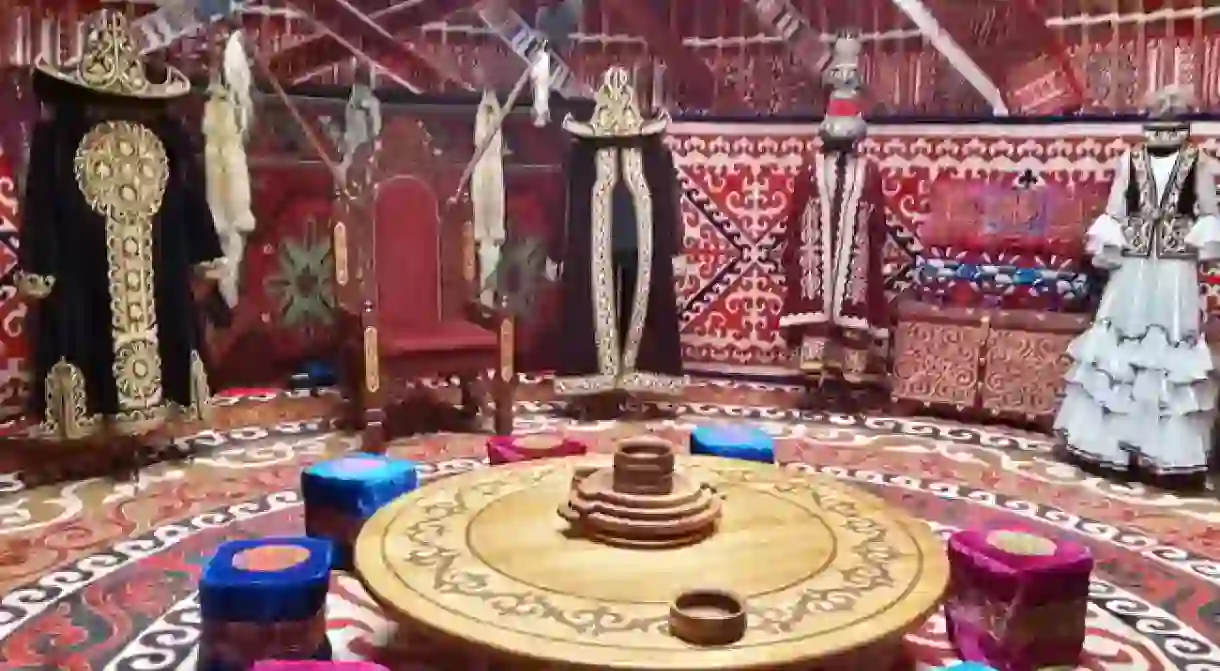From Yurts to Felt Crafting: Exploring Kazakhstan's Fascinating Nomad Culture

Kazakhstan is a glorious country in Central Asia whose varied landscapes of low-lying plains, mountainous peaks and expanse of endless steppes has fostered a fascinating nomadic spirit. While major upheaval for Kazakh nomads began in the early years of the 20th century, its traditions can still be traced.
The yurt is the most common type of nomadic dwelling, the bed-rock of the Kazakh nomadic tradition. Its two-tiered structure symbolises unity with the cosmos, crowned with a dome called a shanyrak. Even the table in the middle is usually round to foster a sense of communion.

The interior decorations have traditionally been crafted by Kazakh bone carvers (suyekshi) using the ribs, tibia and horns of domestic and wild animals. This is usually softened by felt-crafted decorations and gorgeous handmade carpets, a craft you can discover first-hand through workshops at the artisan craft centre in Almaty.

In this vibrantly coloured carpet, made by modern Kazakh artisans and showcased at the artisan centre of Almaty, the pattern is intentionally cut through its borders in order to promote the idea of immortality. The creator says that a carpet which has no end helps to inspire perpetual reincarnation.

In terms of felt-crafting, patience is the greatest skill you can possess. ‘You have to be very patient when felt crafting, it takes a lot of time,” says Kulzhay Khusman, a felt-maker at the artisan craft centre. ‘It’s a very creative work. While many people may take the same pattern, each person has their own style and plays with the pattern in their own way.’
Artisan centre in Almaty | Jade Cuttle/Culture Trip
‘I learnt from childhood, it was passed down from my mother and my father,’ says Kulzhay Khusman. ‘It takes at least a month to make a 12 metre decorative piece such as a bag cover, and up to 2 months for more difficult things.’


The Almaty artisan centre only uses wool from local animal sources, as well as natural dyes, producing a variation in colour depending on the type of sheep used. While camel wool is not suitable for high-quality felting, it makes ‘great’ material for weaving.

Although few people today use yurts as their permanent place of residence – opting for a more seasonal use instead in Kazakhstan – these traditional carpets are still used as decorations. Traditionally, the patterns experiment with a ‘positive negative’ arrangement between contrasting colours.














